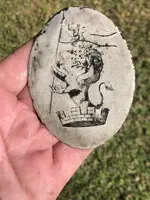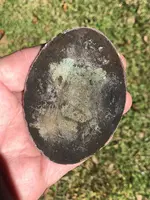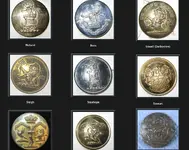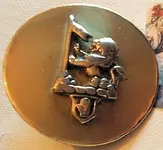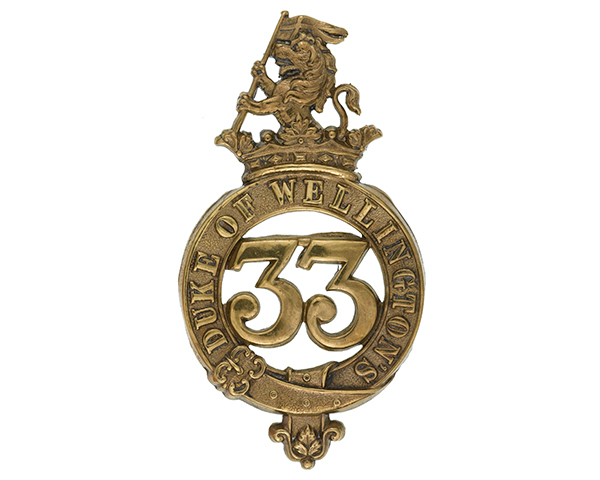In my honest opinion, there’s a lot of ‘over-thinking’ going on here.
Just to re-cap, the emblems on the plate are:
- A demi-lion rampant (ie shown as the top half of the animal rearing up)
- A pennant flag on which there is a griffin passant. It has a beak, so it’s definitely a griffin, not a dragon. It has four legs, so it’s not a wyvern.
- A crown from which the lion is issuing. It’s a mural crown (ie modelled on the walls of a castle) and has no royal associations. Typically this kind of crown is seen on town/city/county arms and also widely used in the crests of notable families.
None of these emblems have any particular association that’s specific to England, Scotland or Wales. They don’t appear together on any regimental insignia (that I’m aware of), nor together on the arms of any town, city or county in Britain. As a family or livery crest, their use together is not unlikely and that also applies if this crest was created for prestige, or for pretentious reasons (whether as a fantasy or using some vestige of heraldic history). The same is true for the plate posted a while ago on another thread, which has a heraldic animal (possibly a boar’s head?) issuing from a ducal crown.
Dating back to mediaeval times, heraldic imagery was commonly used on horse bridle rosettes, harness plates and such. In those days, the heraldry related to the crests of noble or notable families. That kind of imagery continued all the way through to the 1900s, but progressively became swank and pretension. The emblems used were more often borrowed from the world of heraldry by those keen to impress rather than being a historical crest for a particular family name… although both rationales co-existed.
Here’s a c1900 horse brass with that kind of imagery, but it’s just heraldic guff that doesn’t relate to anything in particular. The lion with the flag was a common heraldic device; the lion issues from a heraldic torse (with knightly symbolism) rather than a crown; and the open left hand below was a common charge in the coats of arms for baronets.
View attachment 1988614
It wouldn’t surprise me at all if a well-heeled family with an estate in America commissioned some small number of horse-related plates/rosettes with heraldic imagery of this kind as a show of prestige. Particularly if they had hereditary connection to Britain. Such emblems might actually have historical family usage but in the 1800s were often just put together as a kind of ‘pseudo-crest’ (either unique or generic) with borrowed elements of heraldry copied from book illustrations and such. One thing for sure is that, in this case, it’s a finely-crafted piece with beautiful engraving which suggests it was custom-made for someone who wasn’t short of money.
Whatever, it's a lovely find and unlikely to exist in anything other than very small numbers. It may even be the only one made.



